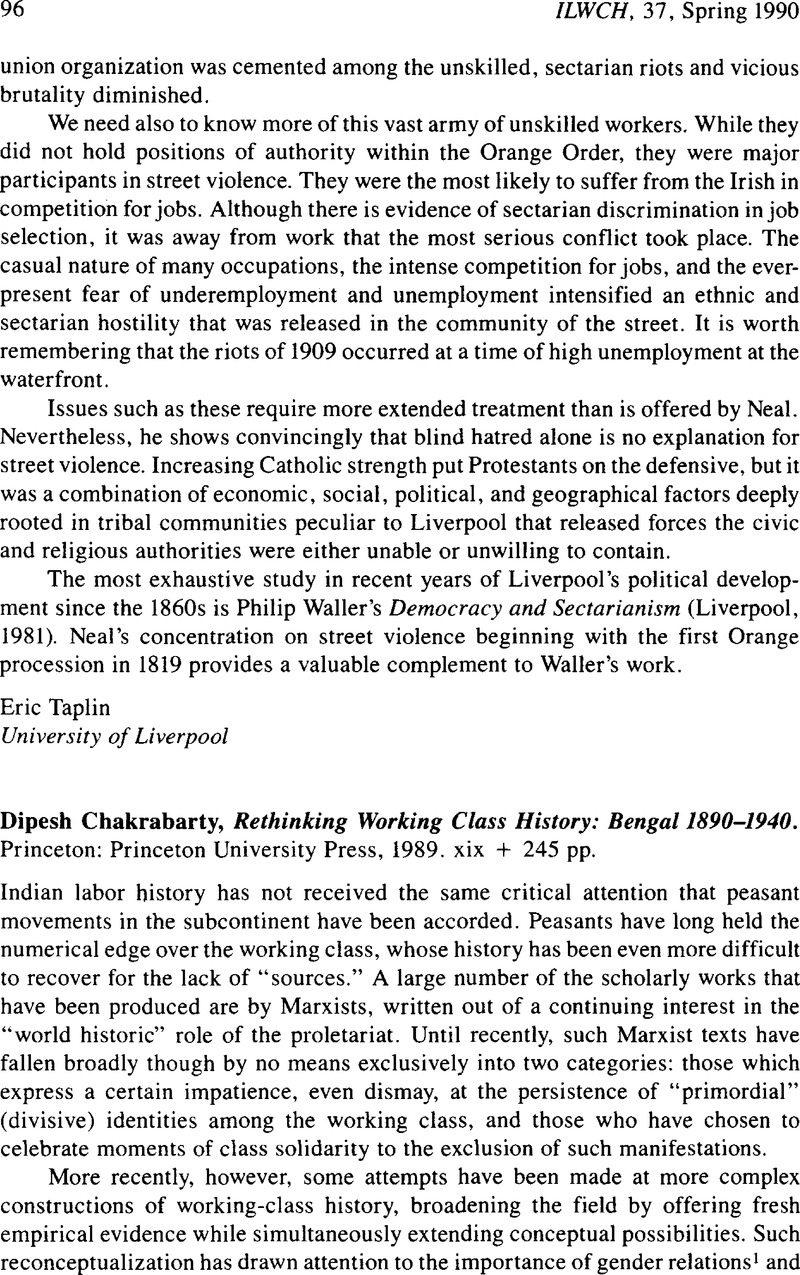No CrossRef data available.
Article contents
Dipesh Chakrabarty, Rethinking Working Class History: Bengal 1890–1940. Princeton: Princeton University Press, 1989. xix + 245 pp.
Published online by Cambridge University Press: 16 December 2008
Abstract

- Type
- Book Reviews
- Information
- Copyright
- Copyright © International Labor and Working-Class History, Inc. 1990
References
NOTES
1. Kumar, Radha, “Family and Factory: Women in the Bombay Textile Industry, 1919–39,” Indian Economic and Social History Review 20 (1, 1983):81–110.CrossRefGoogle Scholar
2. Chandavarkar, Rajnarayan, “Workers' Politics and the Mill Districts in Bombay Between the Wars,” Modern Asian Studies 15 (3, 1981):603–47.CrossRefGoogle Scholar
3. Joshi, Chitra, “Kanpur Textile Labour: Some Structural Features of Formative Years,” Economic and Political Weekly, 11 1981, 1823–37.Google Scholar
4. Chakrabarty, Dipesh, “Communal Riots and Labour: Bengal's Jute Mills in the 1890s,” Past and Present 91 (1981):140–69.CrossRefGoogle Scholar
5. Laclau, Ernesto and Mouffe, Chantal, Hegemony and Socialist Strategy: Toward a Radical Democratic Discourse, trans. Moore, Winston and Cammack, Paul (London, 1985).Google Scholar Laclau and Mouffe, however, question the centrality of working-class struggle itself and propose “a proliferation of struggles” to replace the “unified discourse.”
6. Davies, Margaret, ed., Life as We Have Known It (New York, 1975).Google Scholar




